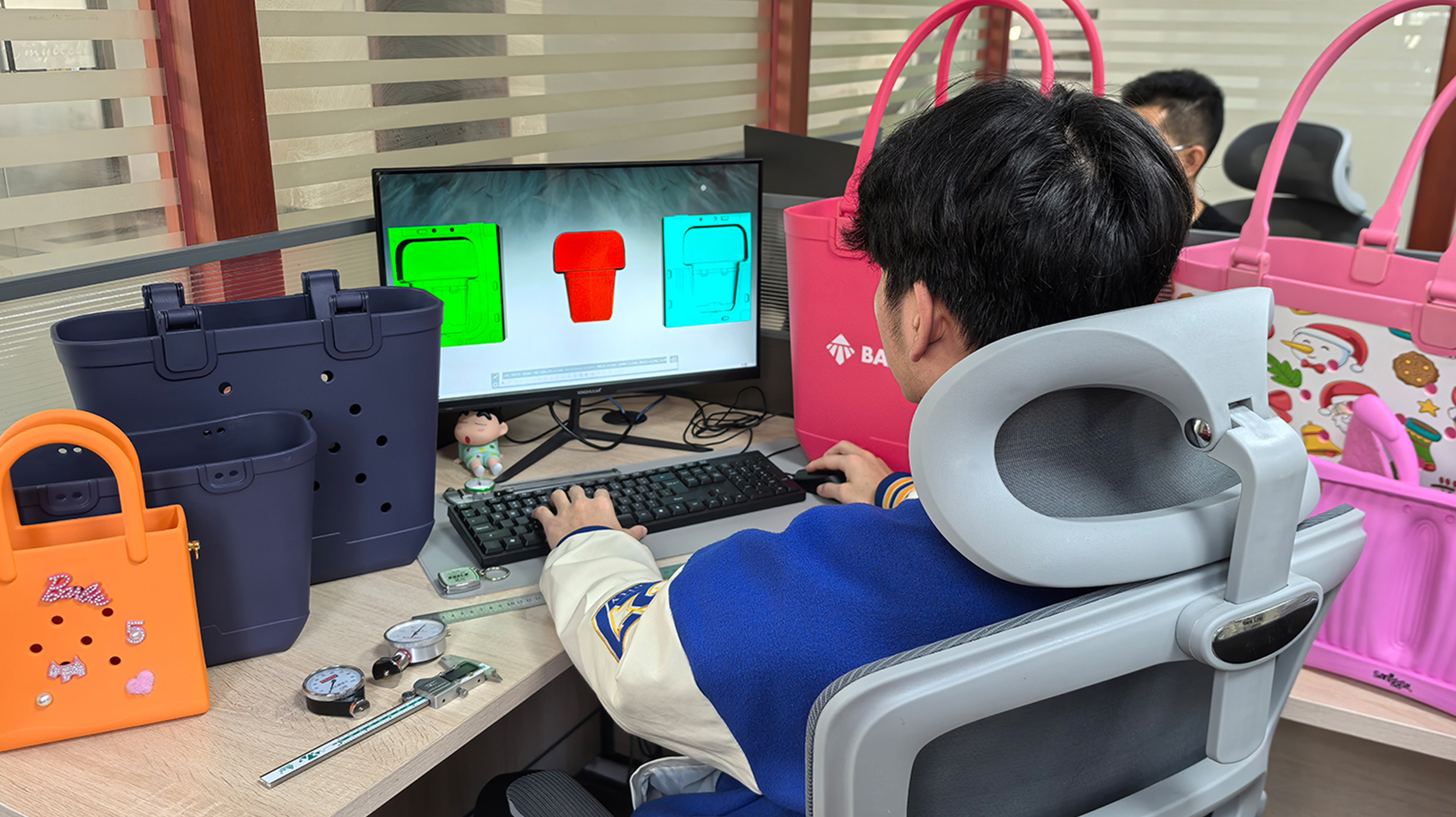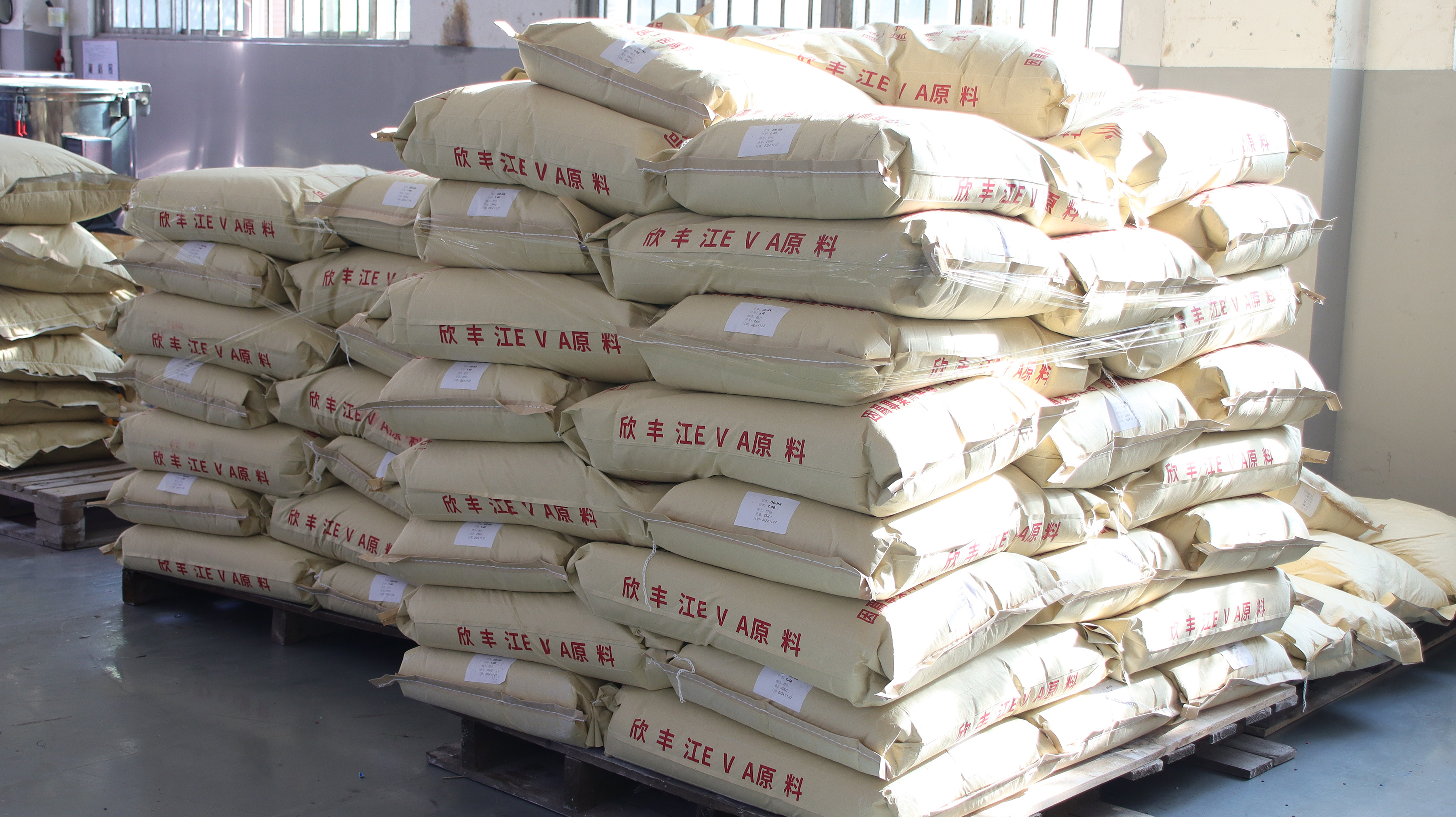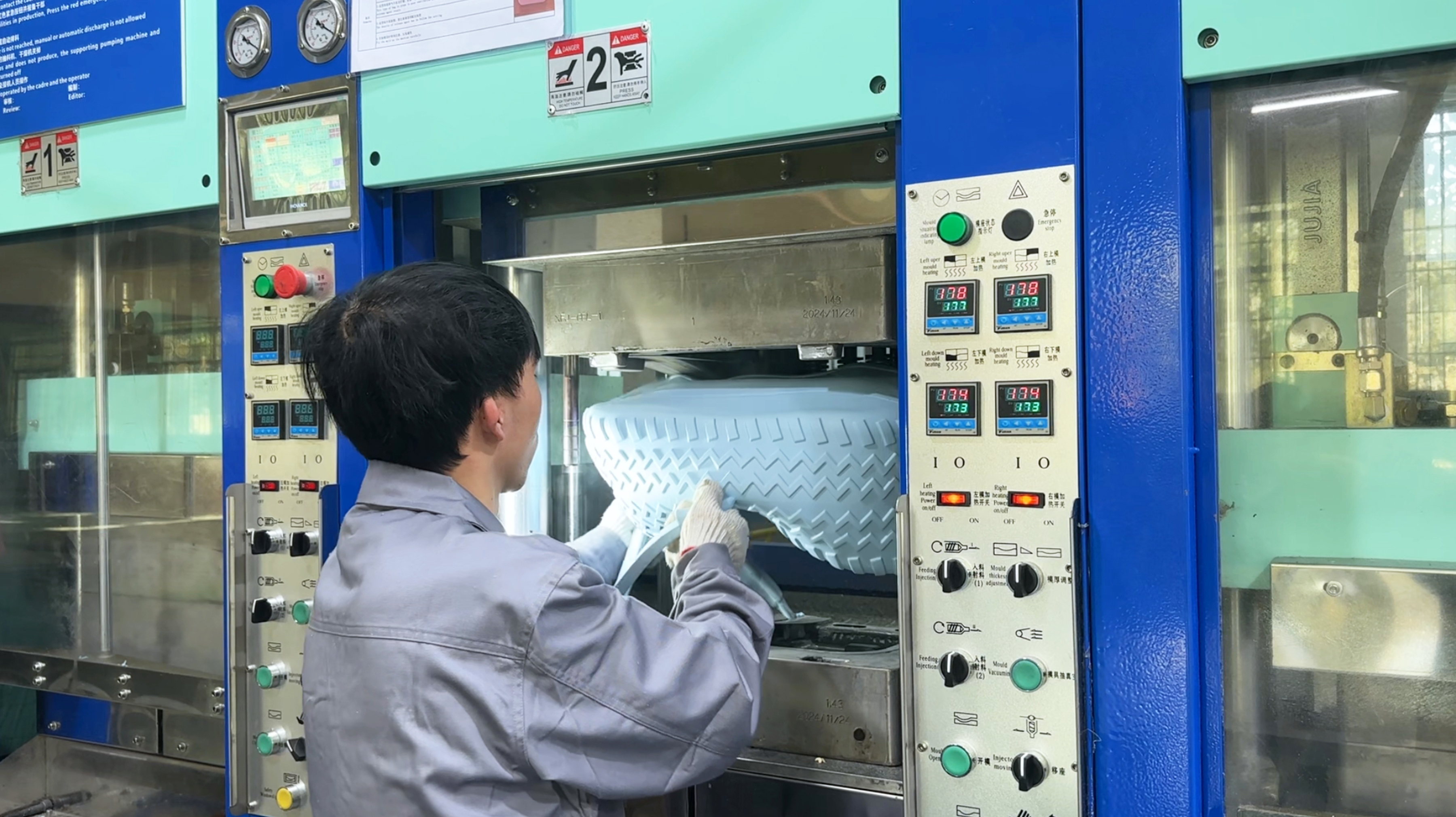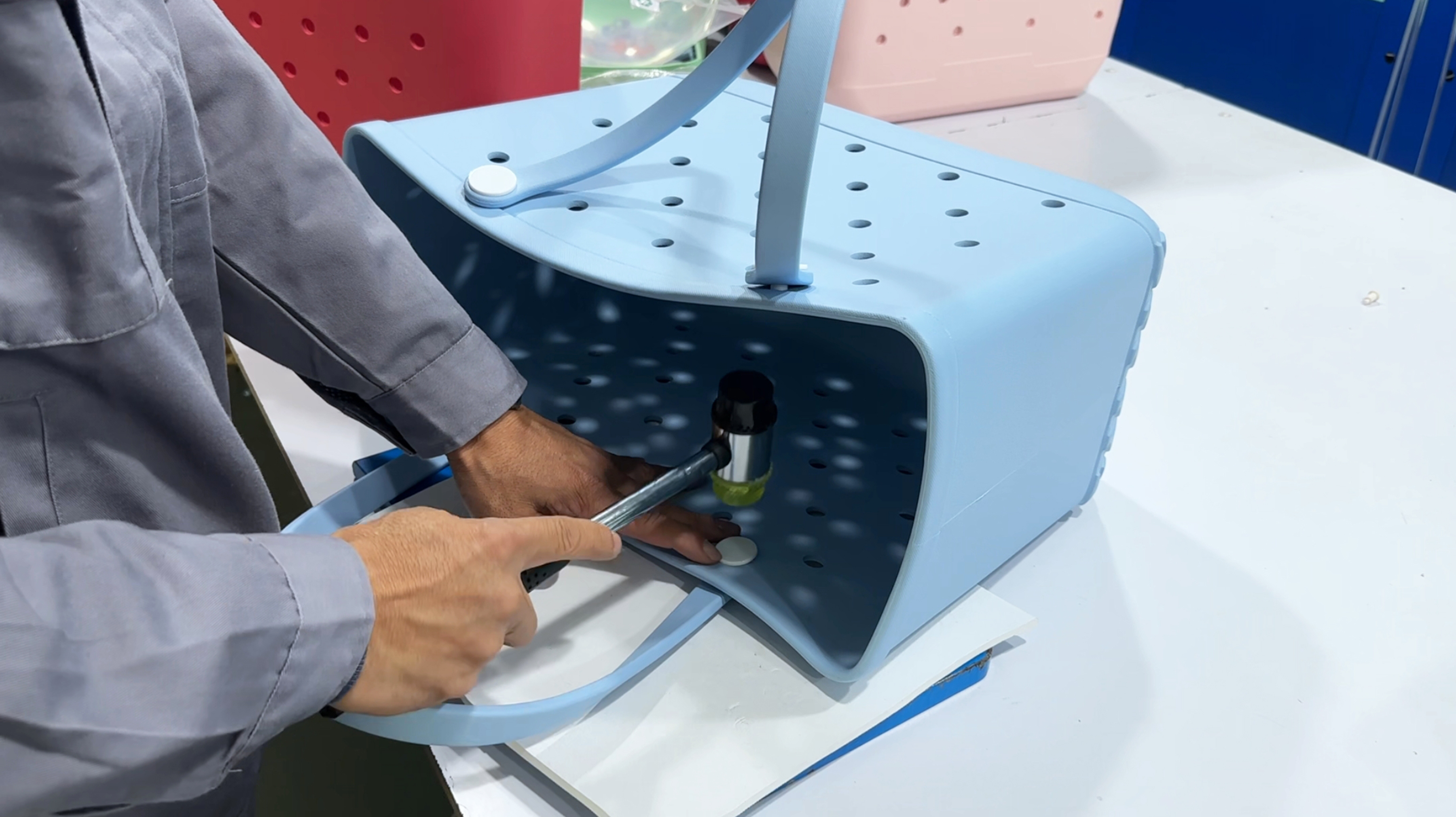Bring you a one-stop understanding of EVA beach bag production process!
The complete process of producing an EVA (ethylene-vinyl acetate copolymer) bag involves several steps, from design to finished packaging, which requires a comprehensive consideration of material characteristics, process technology and quality control. The following is the detailed industrial production process:
1. Design and development stage

Demand analysis: Clarify the use of the bag (such as sports, leisure, waterproof, etc.), determine the target user and functional requirements.
Style design: Designers draw sketches or use CAD software to complete 3D modeling to determine the package shape, size, color matching and pattern.
Structural design: Determine layering, pockets, straps and other details to ensure functional and ergonomic design.
Material selection: Select EVA sheet thickness (common 0.5-5mm), hardness, color, and with accessories (zippers, webbing, hardware buckle, etc.).
2. Mold making
Mold design: Hot press molds are designed according to 3D models, usually using metal (such as aluminum or steel) to ensure high temperature resistance and accuracy.
Mold processing: Making molds through CNC engraving or laser cutting, which may be divided into upper and lower molds or separate molds to adapt to complex modeling.
3. Material preparation

EVA sheet procurement: Select EVA raw materials that meet environmental standards (such as RoHS, REACH), may be customized colors or add anti-UV, antibacterial and other additives.
Accessories procurement: including zippers (waterproof zippers are more common), nylon webbing, D-ring, Velcro, etc.
Pretreatment: Some EVA materials need to be pre-pressed flat or surface treatment (such as corona treatment) to improve printing or bonding effect.
4. Cutting and forming

Cutting: Use laser cutting machine or hydraulic cutting machine to cut EVA sheet into parts (such as body, side, base).
Hot press forming:
The EVA sheet is put into the mold and heated to 120-160 ° C to soften it.
Apply high pressure (about 50-200 tons of pressure) to make the material stick to the mold, cool and finalize the mold.
It may be necessary to press or composite multiple layers of different materials (e.g. EVA+ fabric).
5. Surface treatment and printing
Printing/hot stamping: Using screen printing, heat transfer or digital printing technology to add logo or pattern, need to use high temperature ink.
Coating treatment: Some products add PU coating or gloss oil to improve water resistance and wear resistance.
Special effects: embossing, laser engraving or reflective strip fitting (such as a night run bag).
6. Assembly and sewing

Component preassembly: Install hardware fittings (e.g. D-rings, clasps), which may be riveted or ultrasonic welded.
Stitching:
High frequency welding: The use of high frequency machine heating EVA joints, so that it is fused (no stitches, good water resistance).
Sewing: Use an industrial sewing machine to stitch the edges and seal the pinholes with waterproof thread or rubber strips.
Accessories installation: Sewing shoulder straps, zippers, handles, etc., may be reinforced with adhesive or rivets.
7. Quality inspection
Physical test: Check tensile strength, tear strength, wear resistance (e.g. Martindale test).
Functional test:
Water resistance test (spray or immersion test).
Zipper opening and closing smoothness, load test (simulated load weight).
Color fastness test (to prevent fading).
Appearance inspection: Remove bubbles, scratches, printing defects and other defective products.
8. Packaging and shipping
Cleaning and finishing: Remove debris or fingerprints left over from production.
Packaging design: Use environmentally friendly materials (such as degradable plastic bags), customized tags, manuals, warranty cards.
Packing: color/code packing according to customer requirements, label and record the batch number.
Logistics: Arrange for sea or air transport, which may be subject to export country standards (e.g. EU CE certification).
Additional links (optional)
Environmentally friendly treatment: Recycle scraps or use recycled EVA materials.
Customization service: Support small batch personalized customization (such as corporate LOGO embroidery).
Key considerations
Temperature control: When hot pressing, the temperature is too high, which will cause the material to coking, and too low, the molding is not complete.
Mold maintenance: Clean the mold regularly to avoid residue affecting the finished product.
Efficiency and cost: Automation equipment (such as automatic cutting machines) can improve efficiency, but the initial investment needs to be balanced.
Through the above process, EVA bag can take into account lightweight, waterproof and durable, to meet the needs of sports, outdoor and other scenarios. In actual production, the steps may be adjusted according to the order size and technical conditions, for example, small batch production may simplify the mold process, using hand cutting or universal mold.
